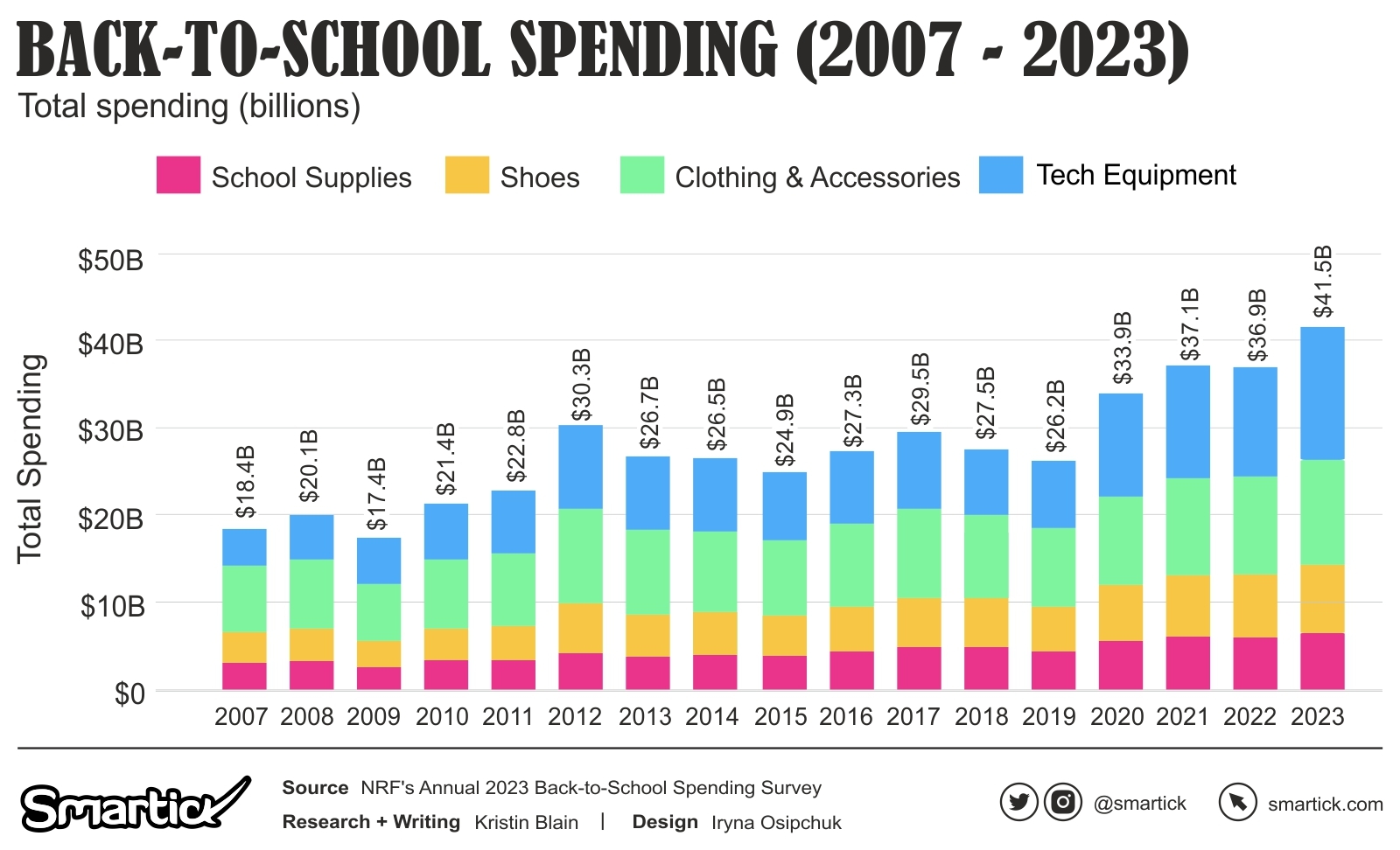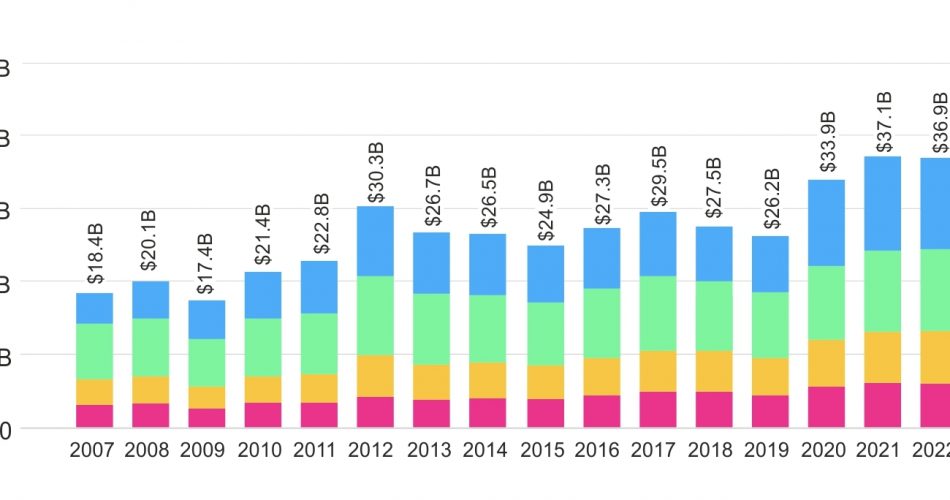
The annual survey by the National Retail Federation (NRF) and Prosper Insights & Analytics has just landed on our desk and guess what? It reveals that 2023 is set to be a banner year for back-to-school shopping. Yep, you heard it right – the school supplies, clothes, electronics, and all those fun extras are flying off the shelves like never before!

Well, let’s break that gigantic $41.5 billion down, shall we?
- Shoppers are pouring the largest chunk of their budget into electronics or computer-related equipment, spending a whopping $15.2 billion. This shouldn’t be a surprise in our digitally-driven world, right?
- Then we’ve got clothing and accessories (excluding shoes) catching eyeballs with a total spending of $12 billion.
- But let’s not overlook those stylish and comfy shoes, strutting their way to a tidy sum of $7.8 billion.
- Lastly, although it might sound humbler in comparison, the indispensable school supplies are securing their piece of the pie with a sweet $6.5 billion.
Matthew Shay, the NRF President and CEO, shared some insights about this trend. He said, “Back-to-class shopping is one of the most important consumer shopping occasions of the year.” He added that retailers have been working hard for months to make sure they’re ready for the shopping onslaught with all the essential items families and students will be hunting for. So, all you shoppers out there, rest assured, your favorite stores are well-prepared for your shopping lists!
Record-Breaking Back-to-School Spending
Now, let’s dive into the nitty-gritty details. This year’s back-to-school spending is set to break all previous records and climb to an eye-popping $41.5 billion. Isn’t that something? It’s a massive jump from last year’s already impressive $36.9 billion and even zooms past the earlier high of $37.1 billion from 2021.

Moving onto a popular topic – electronics. The ongoing spending spree is largely attributed to the soaring demand for electronic devices. A survey revealed an unprecedented 69% of back-to-school shoppers intend to purchase some form of electronic or computer-related equipment this year, a rise from the previous year’s 65%. Astonishingly, the total expenditure on electronics alone is predicted to hit a whopping $15.2 billion.
This surge reflects a significant shift in the consumer landscape of back-to-school shopping. Between 2007 to 2019, clothing was consistently the highest spending category. However, the tide changed in 2020 as societal norms and technology evolved. For the first time, electronic expenditure ($11.8 billion) overshadowed that of clothing ($10.1 billion), highlighting an intensified reliance on technology for education. Far from being a temporary change, this trend has maintained its momentum. By 2023, the spending gap between electronics and clothing has further widened, marking a profound and potentially enduring transformation in back-to-school shopping priorities.
In conclusion, the back-to-school economy is not only thriving but also undergoing a significant evolution. The transition from clothing to electronics as the leading expenditure reveals the changing face of education and a growing integration of technology in our daily lives. This monumental shift, ignited by societal norms and technological advancements, has set a new pace for consumer behavior. With the NRF’s prediction of record-breaking $41.5 billion in total spending this year, back-to-school shopping has proven to be a vital, multifaceted sector of the retail industry. As technology continues to intertwine with education, one can anticipate these trends to further progress, highlighting the ever-changing dynamics of consumer spending. So, as you ready your back-to-school shopping lists, remember that your purchases are a part of a broader economic narrative, one that reflects the ongoing transformation in our society and the way we approach education.

